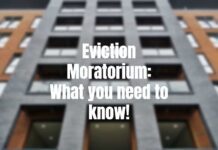This was discussed last month at the Public Safety Review Committee (fwiw – former Alder Eli Judge says it was a good discussion and forwarded me the minutes to read, its the first link) and they hope to make the changes as of February 1. So, you might want to read up on how best to call and get a response for those non-emergency issues (minor car accident, noisy neighbors/house parties, etc.)
Paul Logan, Gary Bell, Rich McVicor, John Dejung from the county were all there to help answer any questions that they might have.
Dejung introduced the people working with him and thanked the committee and staff for their continued efforts, says they talked about it last time and that was a preview. He says they system has been called an interactive voice response system, a phone tree or the auto attendant. This will answer the 2 non-emergency published lines for City of Madison Police, Dane County Sheriff and the 911 call center non-emergency number. It will not answer the 911 line or emergency lines.
Michael Scott (the chair) asks if the City of Madison and Dane County Sherriff are the only ones with non-emergency lines, do all others answer their own lines?
Staff said there were 2 exceptions countywide. There are 5 cities and 3 state agencies that have their own dispatch centers. There are also local numbers for local police departments. At smaller departments, after hours, they get a recording. Some departments do staff their lines 24 hours. Mostly they calls don’t roll over to the 911 call center, but some might do that even during the day when they are on break. Some have done it in the past, but that is not the intent of this.
Dejung says the intent of the system is to have highest probability to get a human timely response. He says that non-emergency calls are 33 – 40% of calls they receive. Predicts that based on experience that 1/3 of those will end up being dispatched. For every 100 calls, 28 are 911 calls, non-emergency 33. Of the 33 calls 1/3 will not have to be handled by a live person. Or, of 100 calls, 11 will be dealt with by automated system. The system allows caller to go through a series of branches on decision tree, most of which come back to live person. He says they are nipping around the edges, to focus people on things they need to be focused on.
Dejung holds up the latest version of scripting, still work in progress, had hand out last time, took their feedback and consultants looked at the language. The scripts are not all recorded, right now it is just a computer voice. They are targeting Feb 1, they have a public affairs effort working with Dane Co Sheriff and Madison police and Maidson fire public information officers.
Julia Kerr, who was just appointed to the committee asks about other languages, Spanish, Hmong?
Dejung says they researched it, county supervisor requested it. The company can’t do it (Hmong), but they do contract with a language line, and they currently handle Hmong calls all the time. However, they need to know not to call non-emergency line. 911 does a 3 way call with translator at language line incorporated.
For spanish, they can choose Spanish as an option. The also have an option for text message only phones.
They do a demonstration by calling the line and listening. You can respond with a voice response or by pressing a number. The staff respond that they are looking for information about winter parking and the response is that they can’t transfer him, but give him and a number to call.
There will be an option to choose to talk to a specific police department or the jail as well.
Dejung says that public information officers will create a plan to inform the public and a few days before it happens they will do a release or press conference. They are continuing with scripting tweaking, they have to test everything, and they will have a small group of public who aren’t fully briefed to be a focus group.
Scott asks when focus group will meet.
Dejung says they hope next week, still need to schedule it.
Eli Judge verifies that the option for Spanish will be spoken in Spanish.
They says yes
Kerr asks how many in the focus group. 50?
Dejung says it will be a small group, not 50.
Scott asks about the options the person is supposed to choose. Is this something happening now or that happened in the past. Will the caller understand what happens depending what option they choose?
Dejung, says this just prioritizes calls. If there is an emergency, they will push 1. That is the highest of priorities. If it is something happening now, that has less priority. If it already happened it will be a lower priority. The citizen determines their own priority.
Scott asks what you would press if your car was just stolen – it already happened, but needs attention now, if push wrong button that it happened in past, may end up further down cue than might want to be.
Dejung, says you have to look at how much further, could be very little, if 911 taker available it will be answered, but if calls come in simultaneously, 911 call will be taken first, and if something is happening now it would be taken second, and if it just occurred it will be 3rd.
Joel Plant (Mayor’s aide and member of the committee) asks about how often calls are not handled for more than a minute?
Dejung says it can happen, if a bunch of calls come in cuz of a fire or car accident that a lot of people see, they will saturate all the 911 call takers, happens a fair amount of time. Last month, there was a moment where it took 2 minutes and 3 seconds to get one of the calls. When they are tied up on 911 calls the auto-attendant will give them an immediate response from a machine, but its not unusual to have a delay.
Kerr asks if they will be testing how long it takes to use the system.
They say they will collect data on everything.
Kerr asks about testing phase. Important part of testing?
Dejung says they already know their response times.
Kerr asks what happens when calls non-emergency and wants a non-emergency police response, they want a police response?
Staff says that on their website they have response times, they have 3rd quarter 09 information up there now. He says that publicly listed non-emergency calls are included in the report, average answer time is 8 seconds, they have 10’s of 1,000s, hitting a live communicator. Now will get auto-attendant, should get picked up quickly.
Scott asks if when large fire or accident is it technologically feasible to record something like “we know there is a major accident on John Nolan, please hold on the line if you have information for us”.
Dejung says that yes it is technically possible, its not common that they would need it and the citizen won’t know whether they have valuable info or not. They don’t want them to hang up, hoping to keep them, even tho ringing a long time.
Kerr says that with nuisance and noise, neighbors used to call non-emergency number but now they call 911. Should they go back to non-emergency? Will that work?
Dejung says that if you need a response to your home 911 is appropriate. He says that on the non-emergency line for noise and nusiance they have to decide what kind of incident it is, disturbance or party, there are no guidelines or protocol. They mostly just take the address, name and telephone number.
Kerr asks how they are dispatched then?
Staff says that is a dispatch question not auto attendant. They collect the info, pass it along to police dispatcher, who based on availability dispatches as they can.
Dejung clarifies that the auto attendant is basically stacking calls on order of when they need attention.
Tyrone Bell asks about the roll out, he likes what he is hearing, and it appears there will be an overall savings to put the automated pieces on the lines. How does that help with people and doing things they need to do. He also asks about if how police department is involved with the roll out, because most people associate 911 with the police.
Staff say they are working with police and fire.
Dejung says there may not be staff savings, but the remaining 89 calls will be handled better and they can concentrate on those, not harried by another 11 calls to be reached.
Staff says they have met half dozen times to discuss how customers will be affected and coordinating strongly with police department for the roll out.
Plant says about about the 1/3 of the non-emergency calls are dispatched, what percentage of of 911 calls get dispatched?
Staff guess its about half, its hard to track, with wireless phones there are many calls for 1 incident. 50% ratio, 2 calls per 1 dispatch due to duplicates.
Dejung says that is his experience in Minnesota and it is reasonable.
Bret Gundlach asks how long it takes to answer a 911 call.
Staff says 6.5 or 7 seconds.
Gundlach asks if when they talk about improving service, with they shave a second off that time? And if so, is that significant.
Staff say that they may and even tho it doesn’t sound like much, it is significant. They point out again that this really helps make sure call takers focus on things they need to focus on. 11% of the calls does make a difference, it will help them meet a national standard, even at 6.5 to 7 seconds they are not there yet. Truing to improve to get the best they can.
Chan Stroman asks how they will evaluate and get feedback.
Dejung says they will see if they have a time savings and reduce handle time for calls they do take, but also need to look at quality of interaction. They have a quality assurance program. They will look back and see if performance measures have improved. They need to figure out how to get other feedback. Many have some kind of citizen feedback.
The meeting kinda deteriorates, Dejung thanks them for their time and says they have been a focus group of sorts and that they gave good feedback both times.
So, uh, look for changes starting February 1, or thereabout . . .




